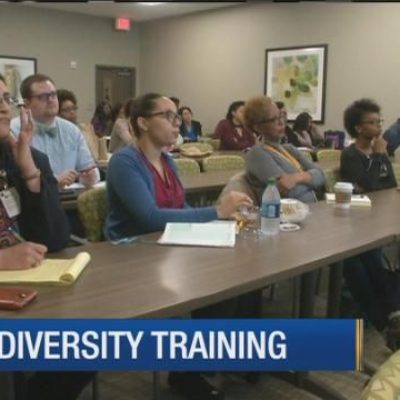Esther Cepeda: More minorities, females are entering STEM-career pipeline
Finally, some good news for brown and black students: A record number of them took Advanced Placement computer-science exams and earned a high enough score to qualify for college credit.
The College Board, the nonprofit organization that owns the AP program, recently reported these three very bright spots:
- African-American students saw the most growth in participation, with an increase of 44 percent in those taking an AP computer-science exam (from 5,057 in 2017 to 7,301 in 2018).
- Hispanic students did nearly as well, with their participation increasing by 41 percent (from 14,860 in 2017 to 20,954 in 2018).
- Female students who took an AP computer-science exam increased 39 percent (from 27,395 in 2017 to 38,195 in 2018).
This is a tremendous feat in the face of continuing roadblocks to science, technology, engineering and math (STEM) courses for women and students of color in public schools.
In a recent report reflecting data from the 2015-16 school year, the U.S. Department of Education’s Office of Civil Rights confirmed what parents in poorly resourced schools have known for years: High schools that serve disproportionate numbers of black and Latino students offer fewer advanced math and science courses — like calculus, trigonometry and physics — than schools with a predominantly white student body.
Just as universities use introductory college courses in STEM disciplines to “weed out” lower-performing students, secondary schools unintentionally do the same, setting black and Hispanic students back when they fail to thrive in algebra.
In the 2015-16 school year, whites made up 58 percent of the students enrolled in Algebra 1 in eighth grade, compared with Latinos at 18 percent and blacks at 11 percent.
Of these students who enrolled in Algebra 1 in eighth grade, 85 percent of the white children passed the course, compared with 72 percent of the Latinos and 65 percent of the blacks. The students who did pass gained entry into the high-school track that would put them in advanced math and science courses by junior year, when college applications and student transcripts start going out.
Part of the College Board’s success is due to the 2016 launch of a new course called Computer Science Principles (CSP). Traditional AP classes focus on one specific area, such as calculus, statistics or a computer-science class that teaches JAVA programming. But CSP is more of a survey course that touches on the fundamentals of computing, including problem solving and working with data, as well as understanding the internet, cybersecurity and programming.
Because early success in algebra is not a strict prerequisite for a stepwise progression through required courses designed to enable a high-school student to pass the springtime AP tests, a more diverse group of students has been able to access the CSP course. This includes 70 percent more black students, 68 percent more Hispanics, 70 percent more females and even 73 percent more students who attend rural schools, over the number enrolled in 2017. Make no mistake: Minority, female and rural students still have tremendous barriers to cross in order to make it from an introductory college-level STEM course to completing a university undergraduate degree in a STEM discipline.
However, what academics have been saying for years is that there aren’t enough blacks, Latinos and women in the pipeline. The opportunity for students to learn coding, data analysis and cybersecurity in high school will open pathways for students to continue to study these subjects after high school, even if not through traditional college-degree programs.
And, far from being a shortcut past high-level math courses, giving students hands-on experience in the kinds of projects that make tangible connections between abstract math and its application in the real world promises to get more students motivated to try challenging math.
The Bureau of Labor Statistics estimates that 93 out of 100 STEM occupations paid wages above the national average in 2015 and that the STEM jobs projected to grow fastest by 2024 are those for people in mathematical science occupations. That’s why a fuller pipeline of STEM-interested students of color and women is much-needed good news.



